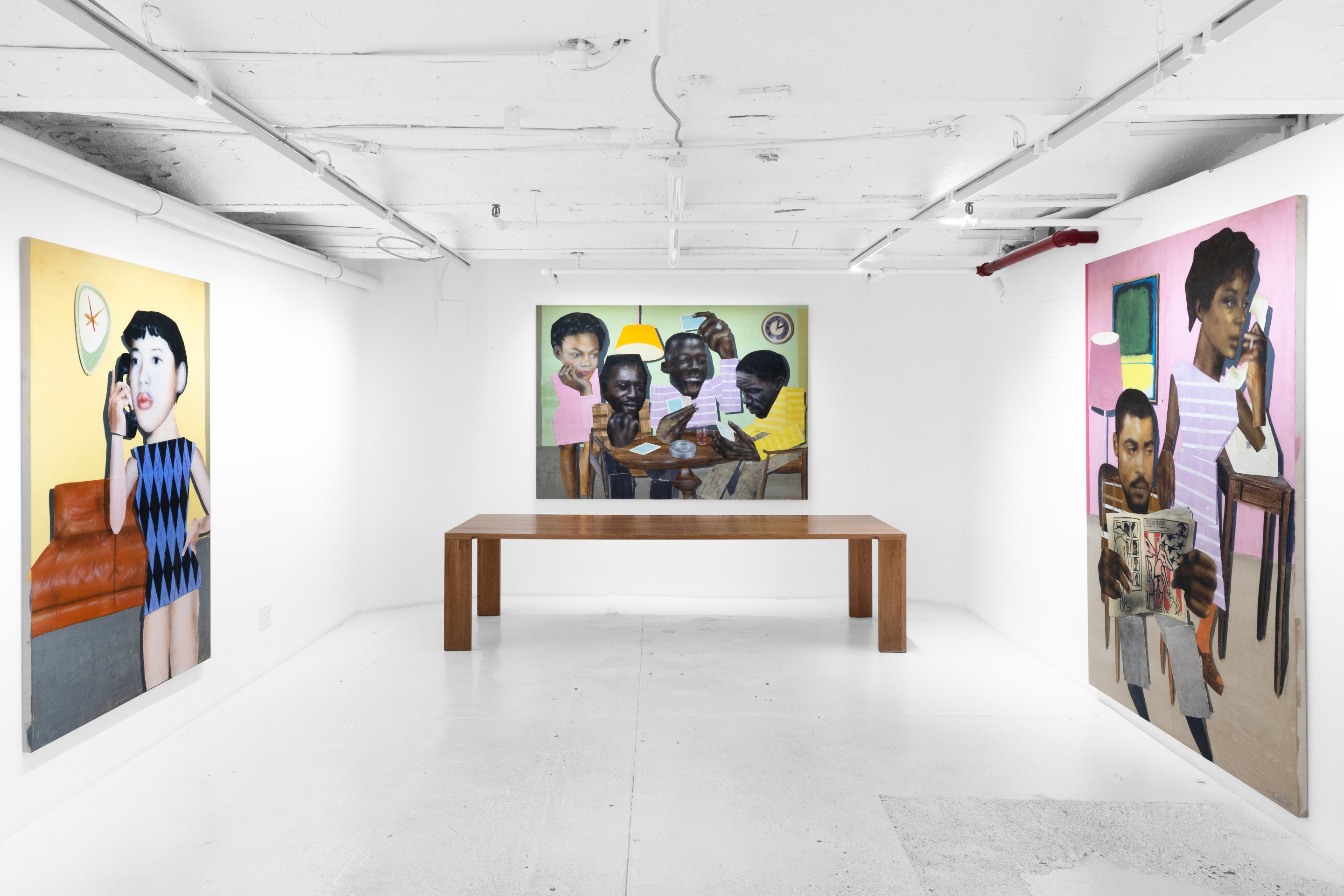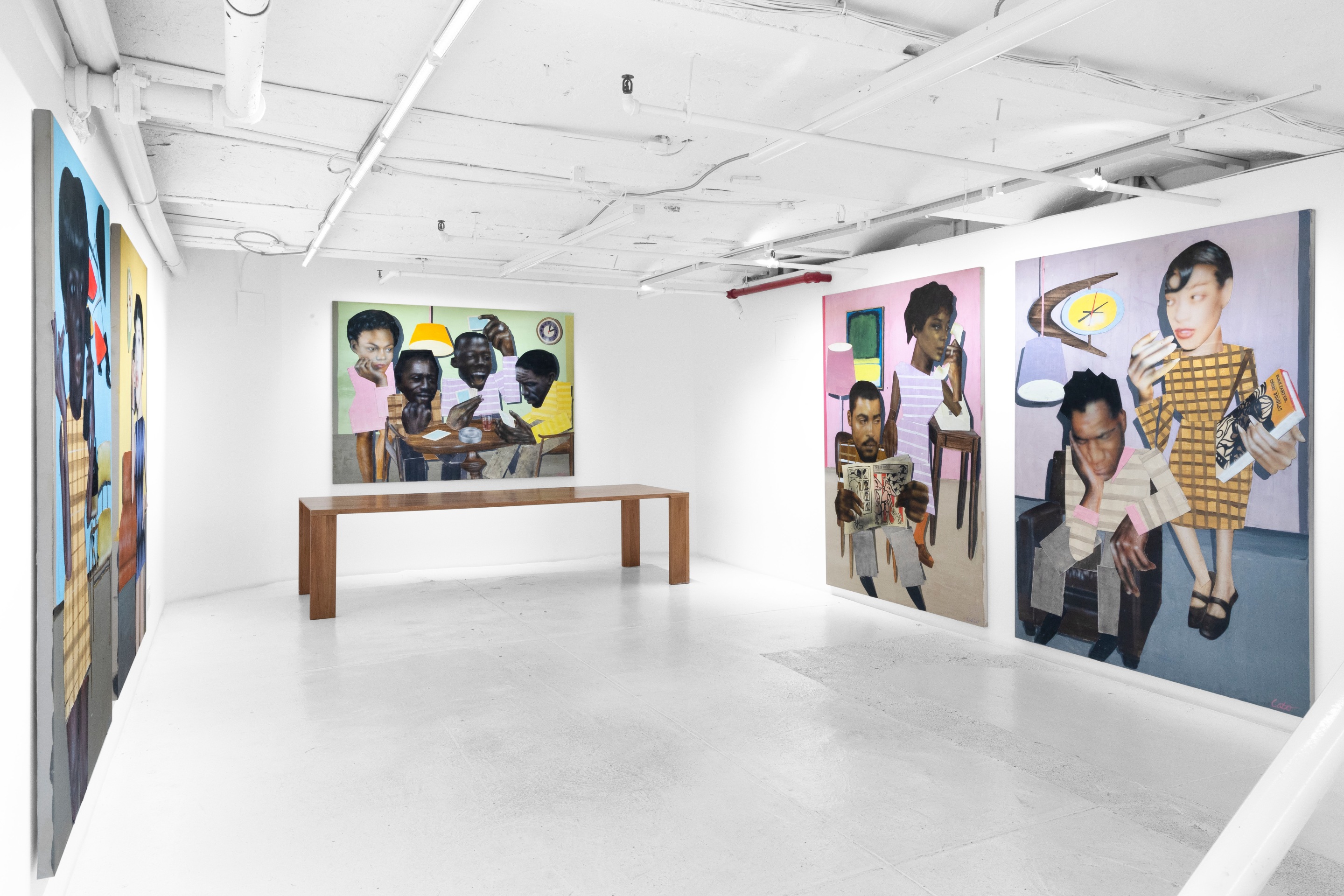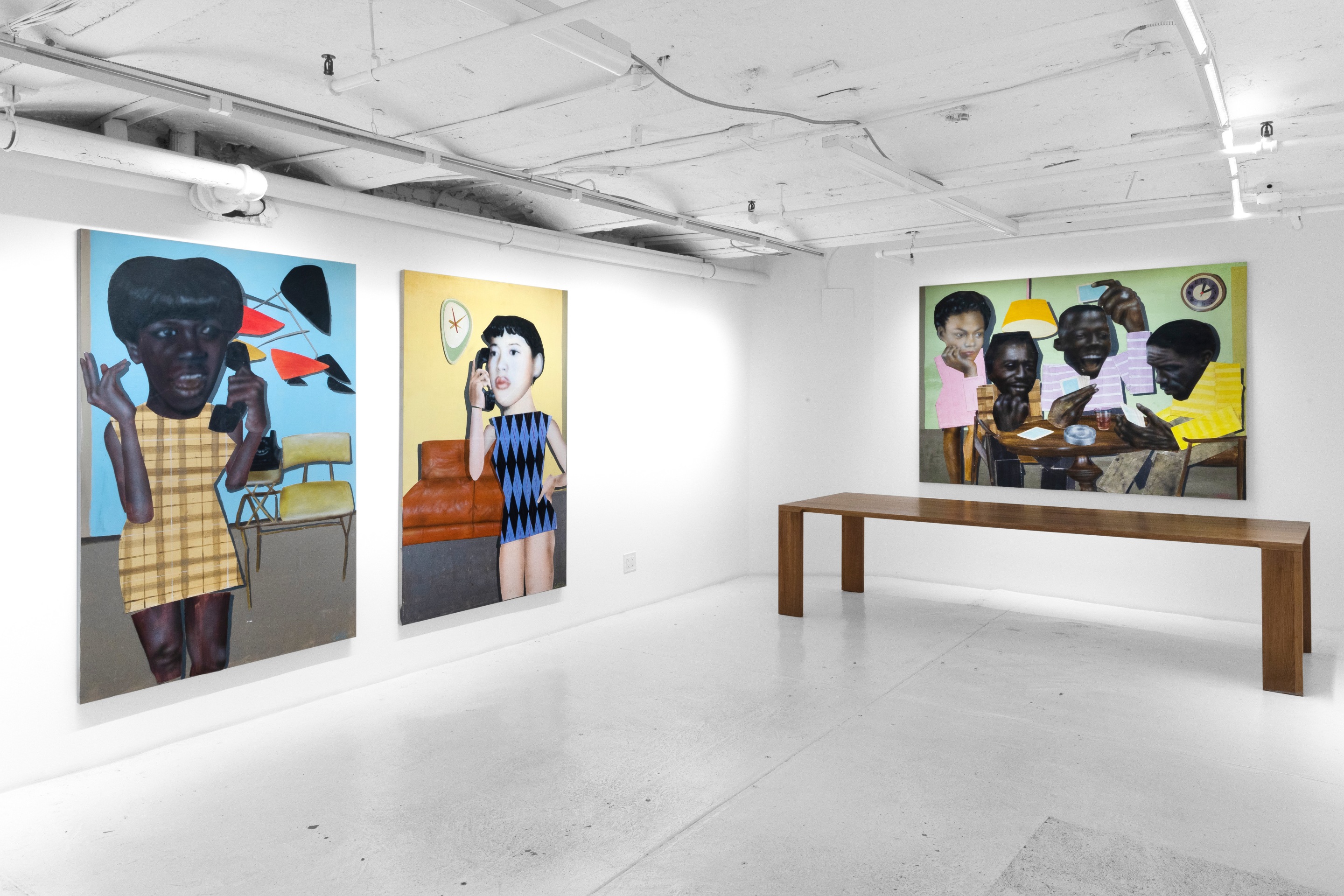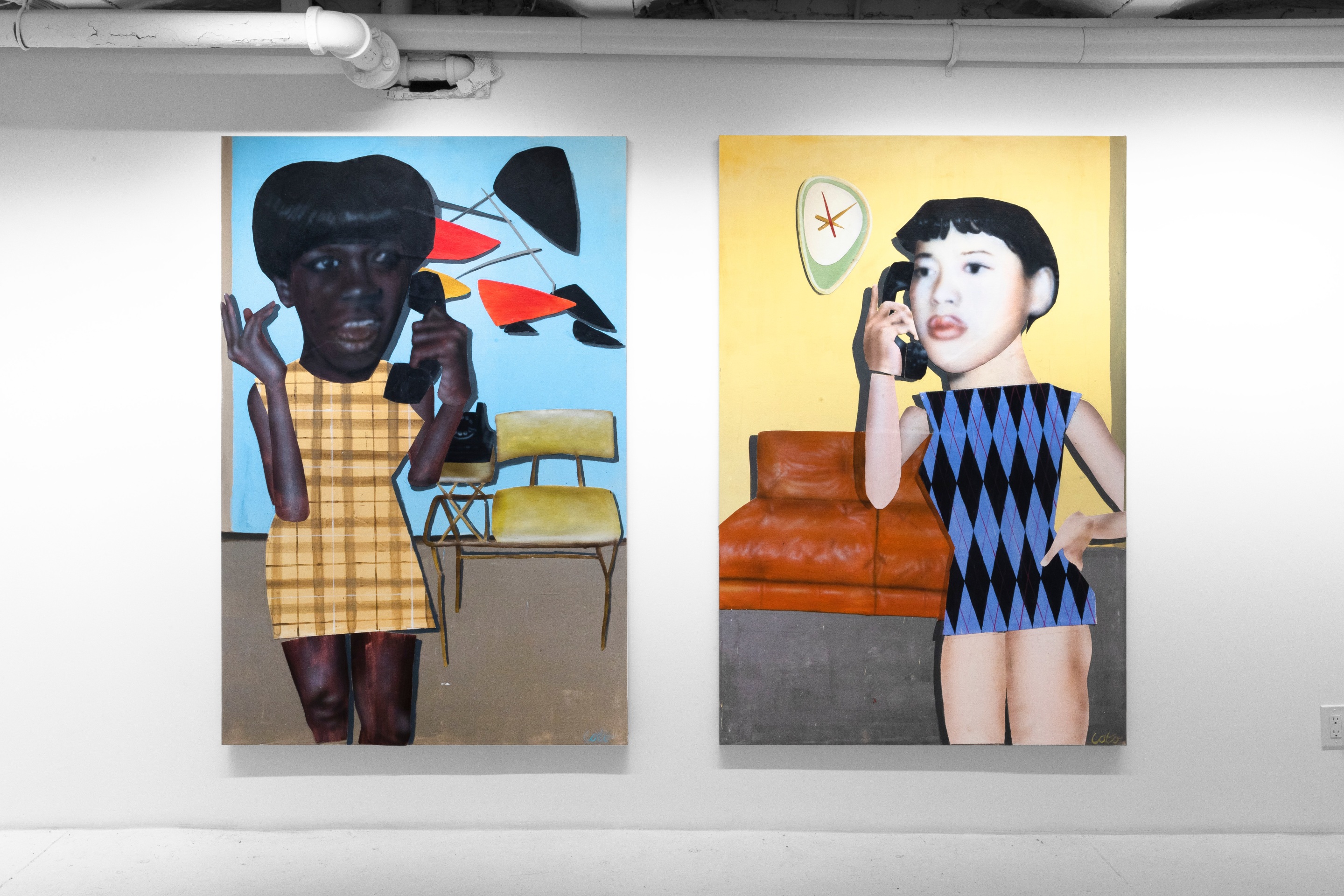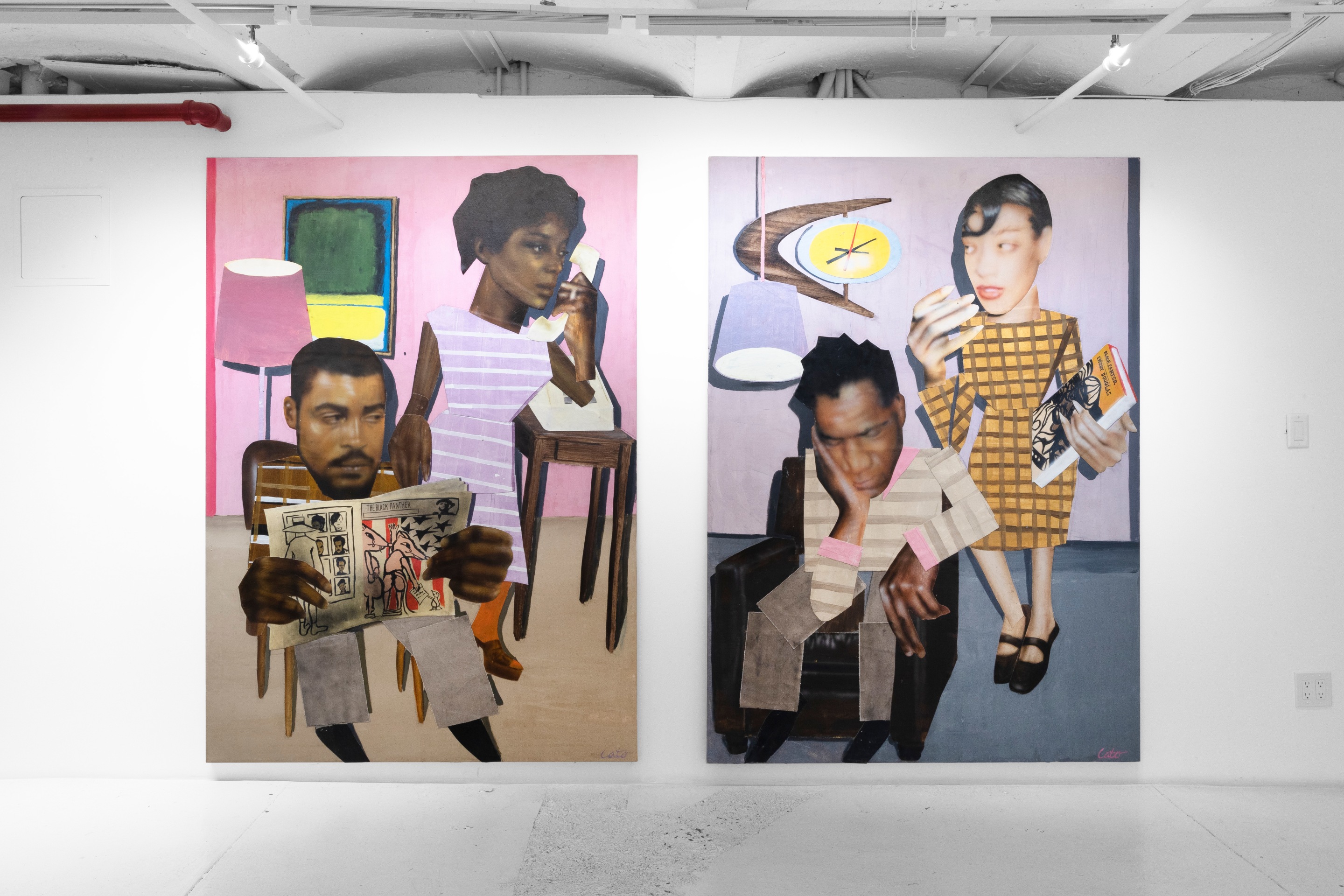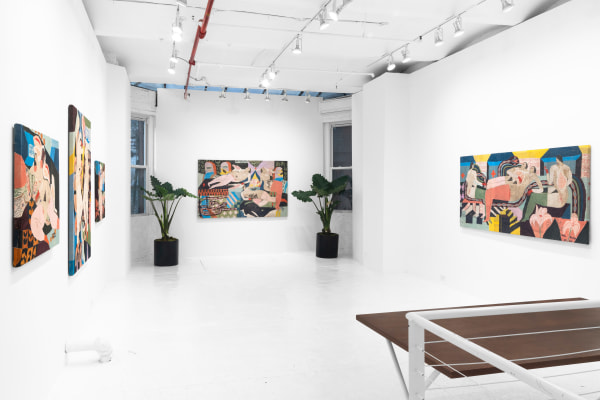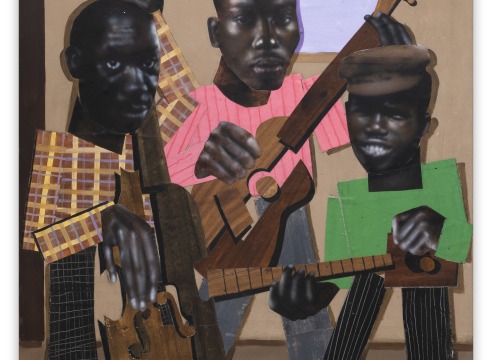
Eric Firestone Gallery is pleased to announce a solo exhibition, Love Song, by British artist Cato. The exhibition will take place at the gallery’s 40 Great Jones Street location, lower level. This is the artist’s first solo exhibition in New York City, and his inaugural show with Eric Firestone Gallery.
Cato (b. Brighton, England, 1999) is a multi-media artist who works with painted and collaged canvas forms to express the energy of the city, Black culture, and relationships between people: musicians, couples, and friends. Largely self-taught, Cato is also a musician and animator. He mines a multitude of visual sources to create his paintings: historical archives, books, art history, and his own polaroids and street photography. Polaroids create the light Cato is looking for; they often result in a harsh flash on the cheeks of the figures. Parts of the resulting paintings first appear like collaged photographs, but they are in fact painted freehand with airbrush.
The paintings in Love Song were all made during a month-long studio residency with the gallery; it was the artist’s first time living in New York. During this month, Cato was able to source images from the Schomburg Center for Research in Black Culture and other archives. Much of Cato’s work has been inspired by the energy of the Harlem Renaissance, citing Romare Bearden as a significant touchstone, and his time in New York allowed him to explore this history more deeply.
The heads and hands in Cato’s paintings are depicted in outsize scale. Facial expressions drive the content and inspire his themes. Cato considers how we might catch glimpses of facial expressions and become curious about people, sparking recognition and empathy. Cato notes that many of us speak with our hands, so they also appear larger-than-life in his paintings. He starts his compositions by referencing his source images while painting the faces of the figures using airbrush. He began using airbrush while living and working in Mexico City, and appreciated the ease with which light could be created, as well as the photographic feel and vintage aesthetic it lent his work. Once his figures’ heads and hands are completed, Cato cuts out these silhouettes and collages them onto a canvas ground, adding geometric collage forms cut from painted canvas to suggest the interiors or street scenes.
There is a deliberate disjuncture between the photorealist style of the heads and hands, and the loose geometric styles and patterns of the rest of the paintings, for which he uses brushes and paint rollers. These forms often suggest Cubist art, especially Picasso’s black and white paintings and his 1921 painting Three Musicians—which was made at the height of his Neoclassical period. Style shifting is a hallmark of Cato’s paintings, lending them a pointed strangeness at odds with the flashes of recognition he achieves.
Cato’s father is a historian whose parents were from Jamaica; this cultural legacy informs the artist’s subject matter and his source material. Many images are taken from his father’s books. A recent painting shows a woman holding a book about Emory Douglas, the official artist of the Black Panther Party. Cato’s mother and sisters are also artists.
Growing up in Brighton, Cato noticed a DIY impulse that inspired many musicians and artists in the area, such as the writer-cartoonist duo of the Edge Chronicles. Science was a passion alongside art-making; Cato links some of his depictions to an interest in Sci-fi. More recent paintings respond to the diversity and energy of the street culture in the Peckham neighborhood in South East London, where the artist is now based.
The new paintings all explore relationships and subtle dramas between people. As he works, Cato waits until he senses communication between the two faces of the figures to determine the rest of the composition. While some of Cato’s earlier works were “set” in the 1930s, these paintings shift forward to the 1950s. Cato was also considering moving from a mostly grisaille palette to a color one, using the parallel of black and white television into color. The lyrics of Gil Scott Heron were another source of inspiration. In several works, objects like a clock evoke memento mori painting.
Cato participated in The Cabin La Brea Studio Residency, Los Angeles, CA, which was followed by a solo exhibition, and has exhibited at the Royal Academy of Arts and the Hive Center for Contemporary Art, Beijing, China. In 2023 Cato released his EP ‘The Wind That Was Blown’ produced by Rhythm Section International. Cato's work is in The Dean Collection.
Cato: Love Song will be presented concurrently with the exhibition Lauren dela Roche: No Man’s Land, also on view at Eric Firestone Gallery’s 40 Great Jones Street location.

